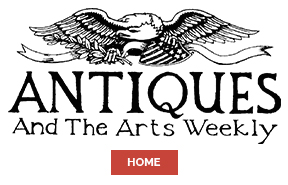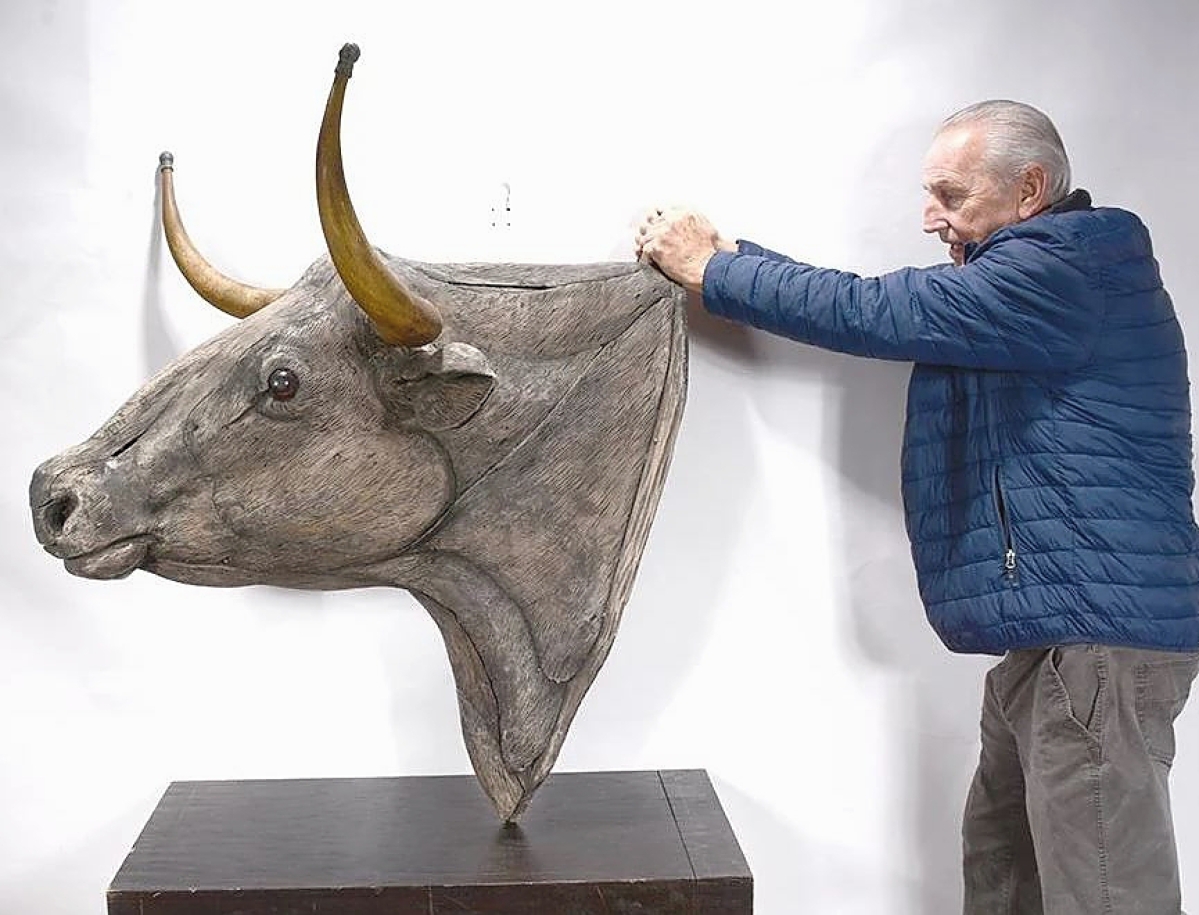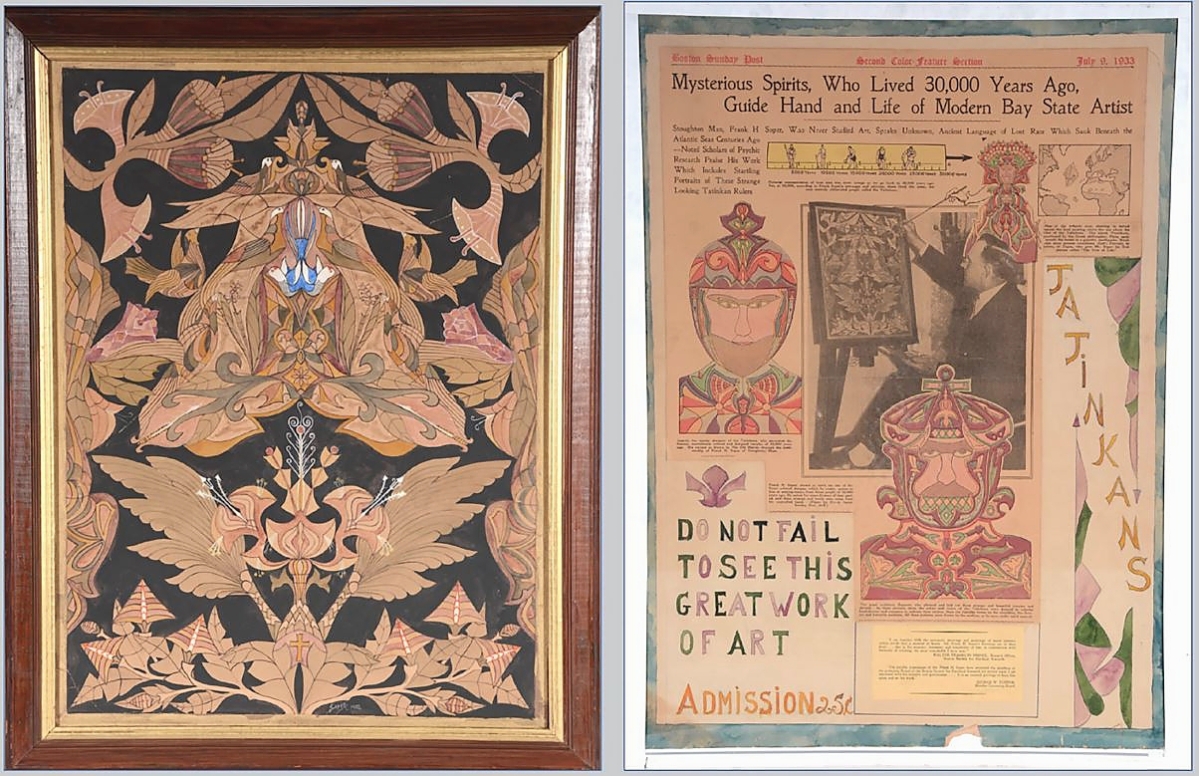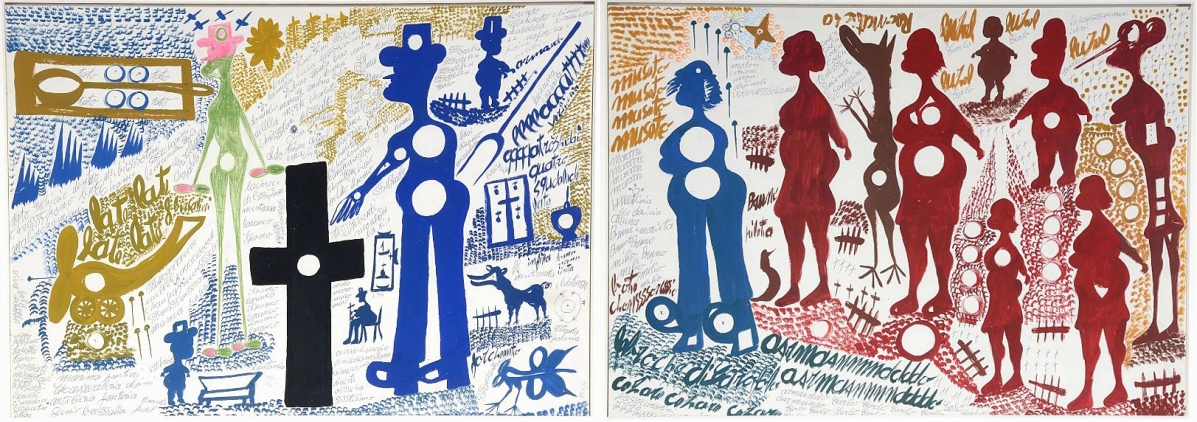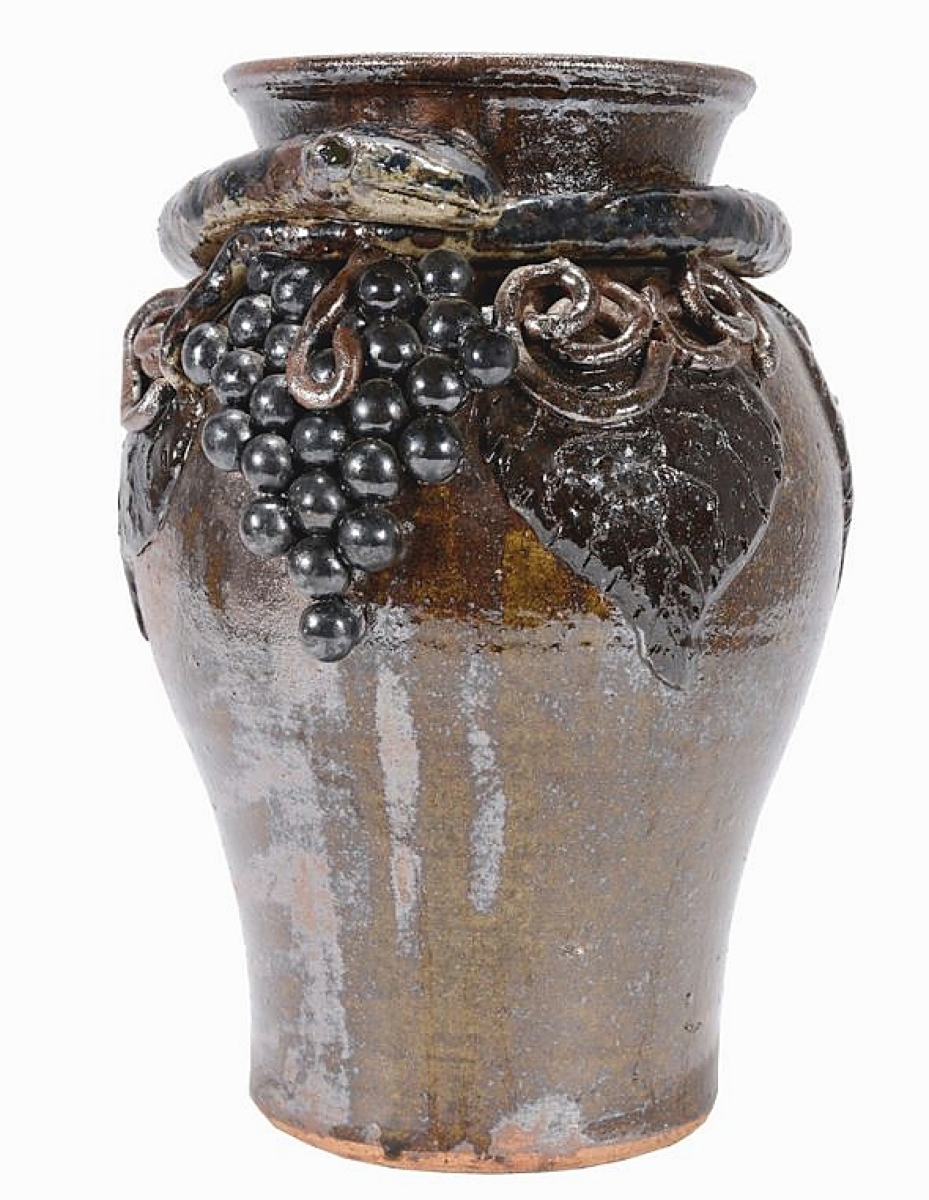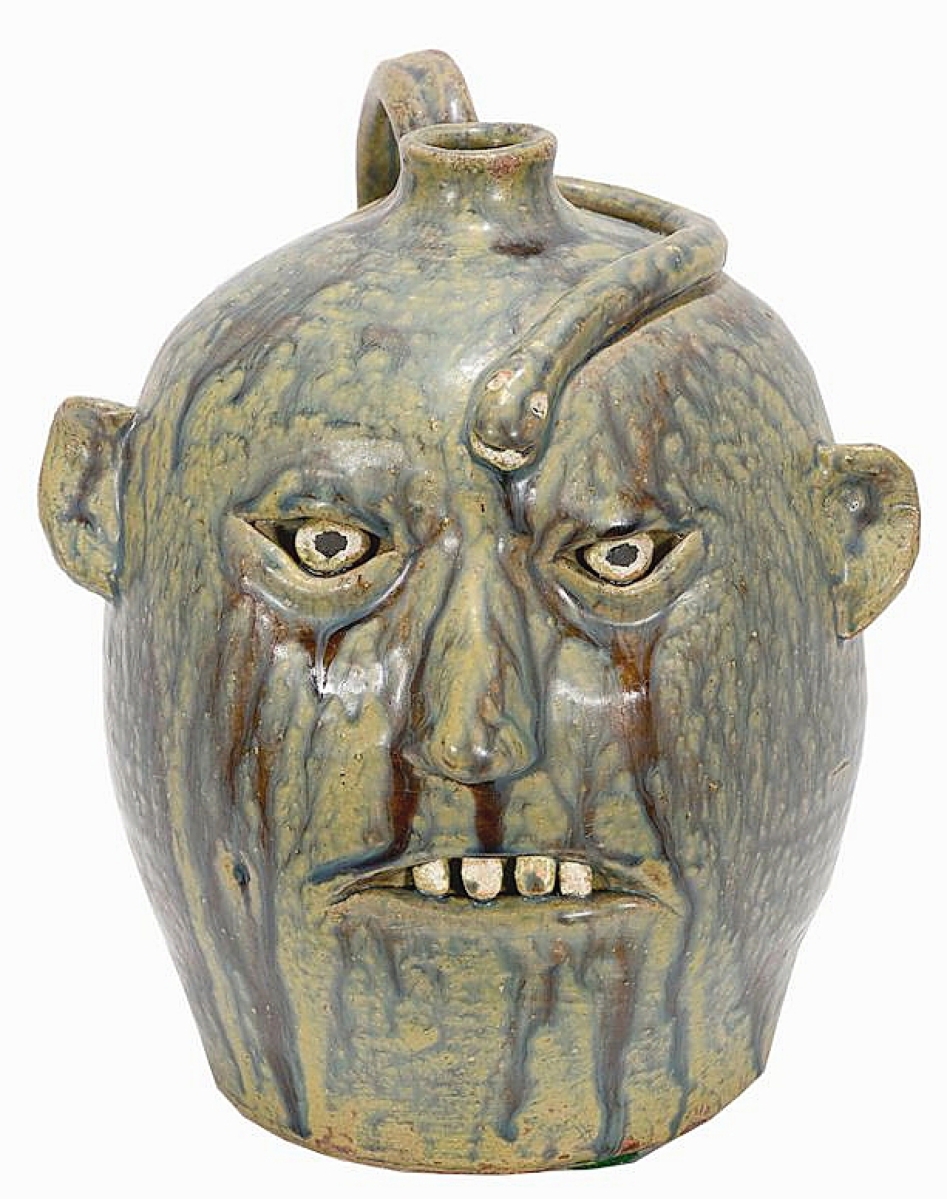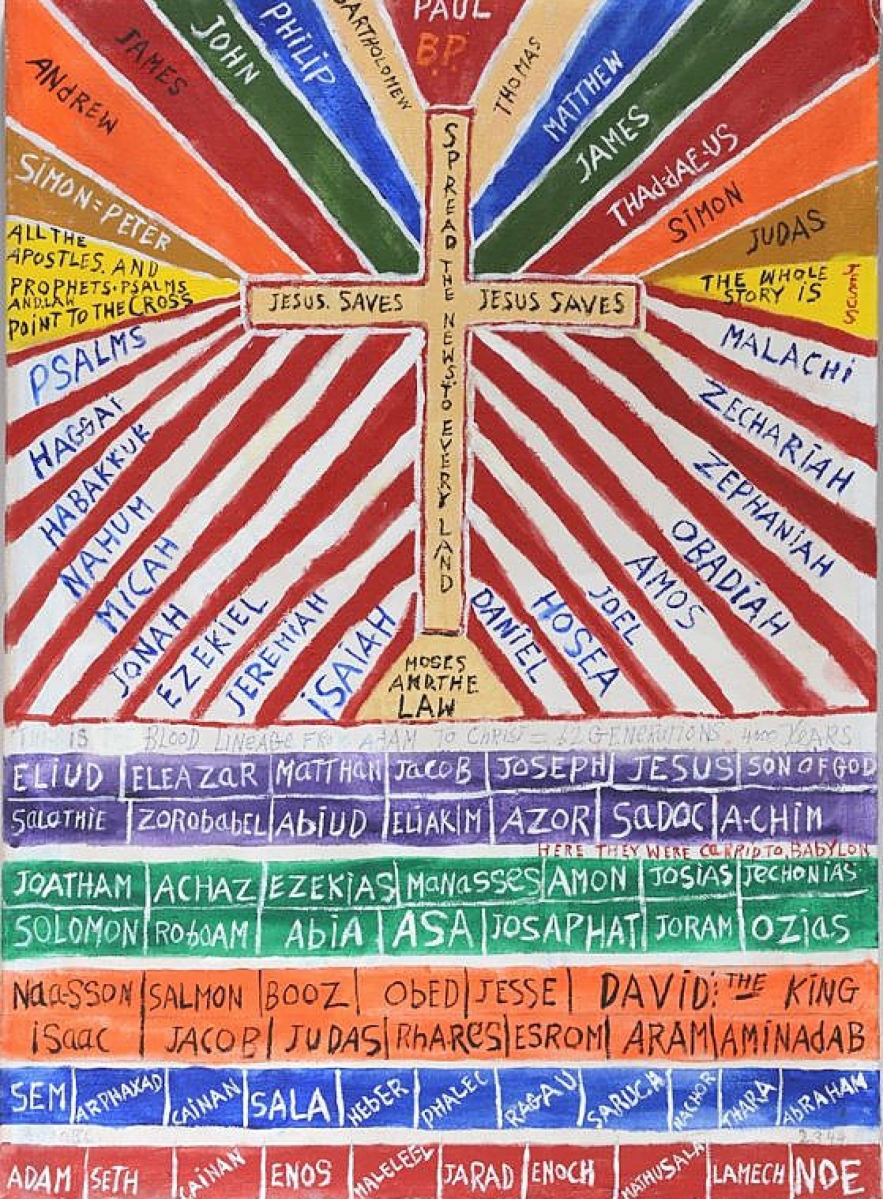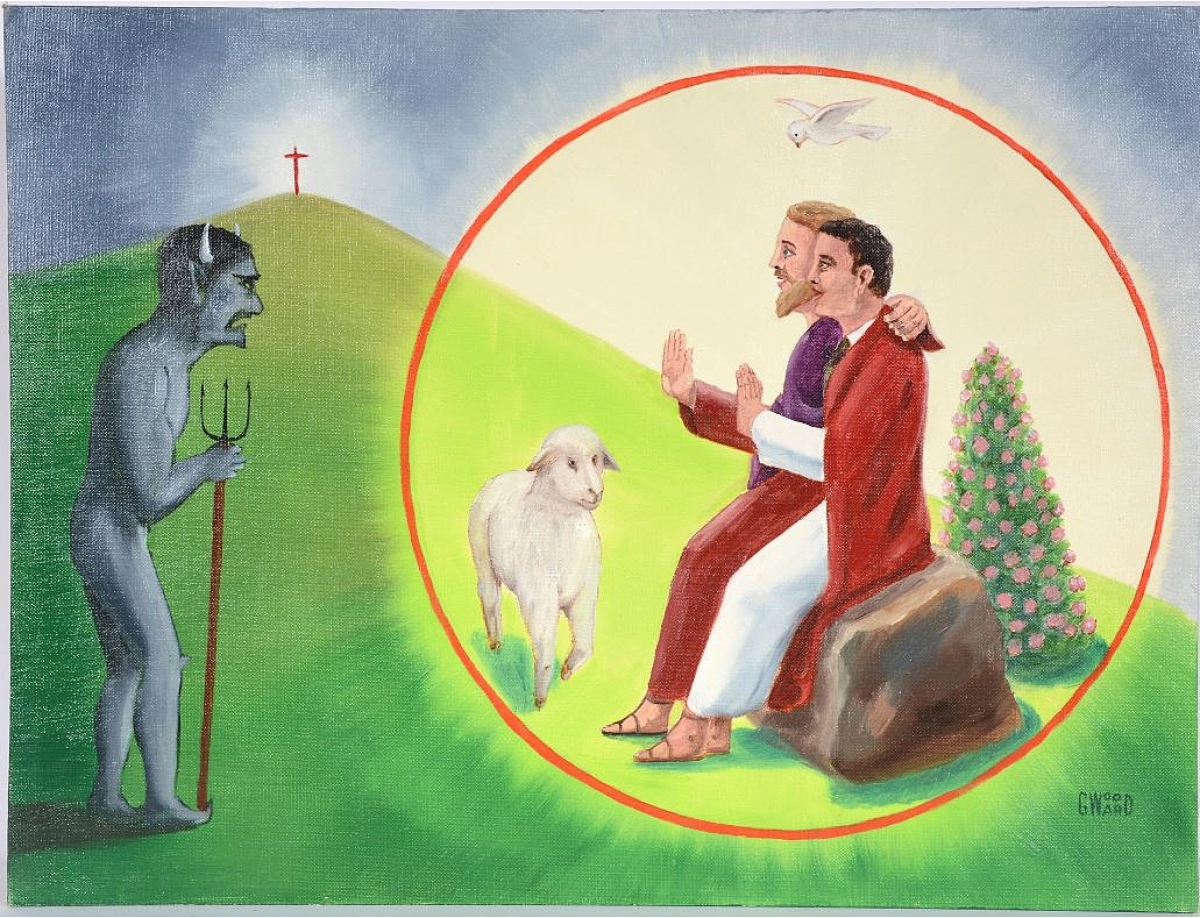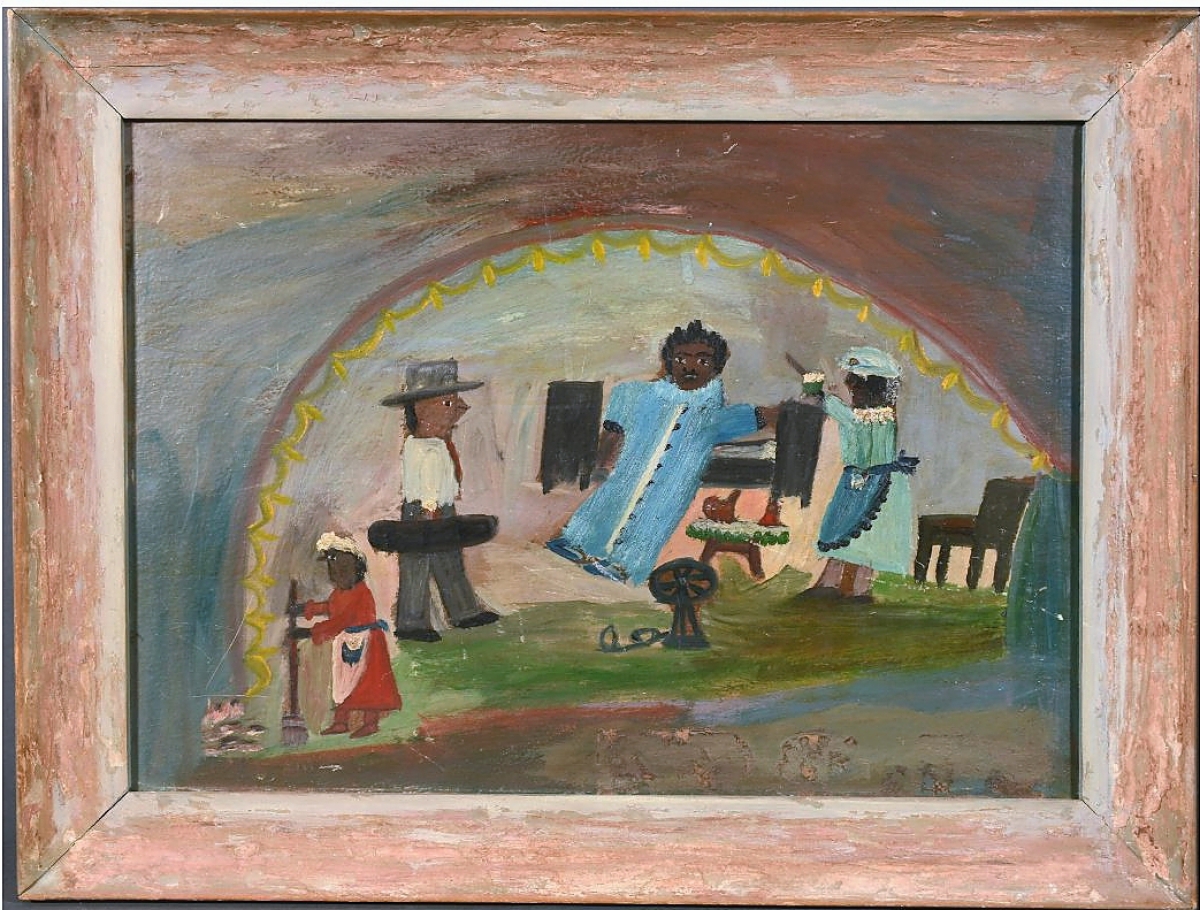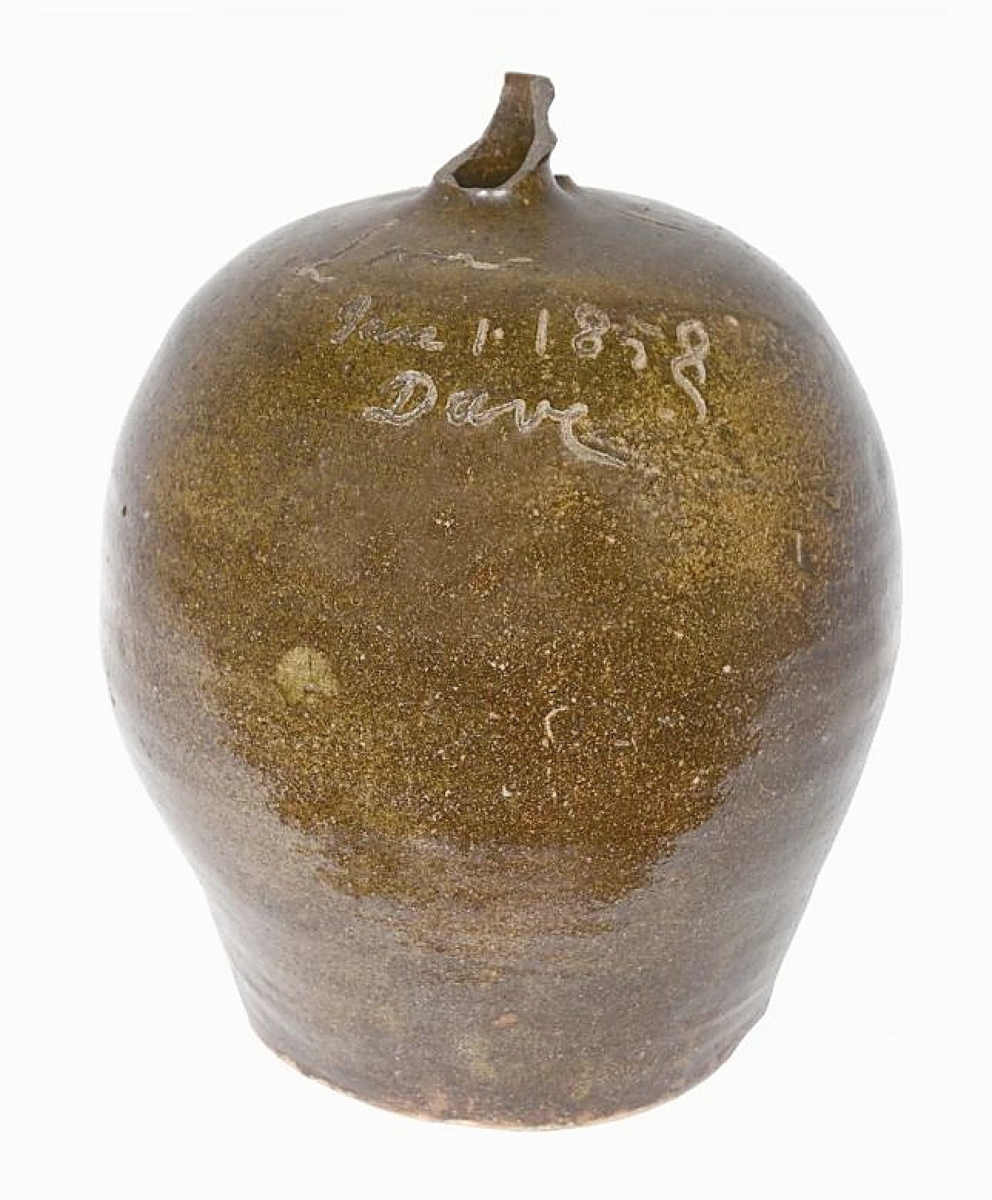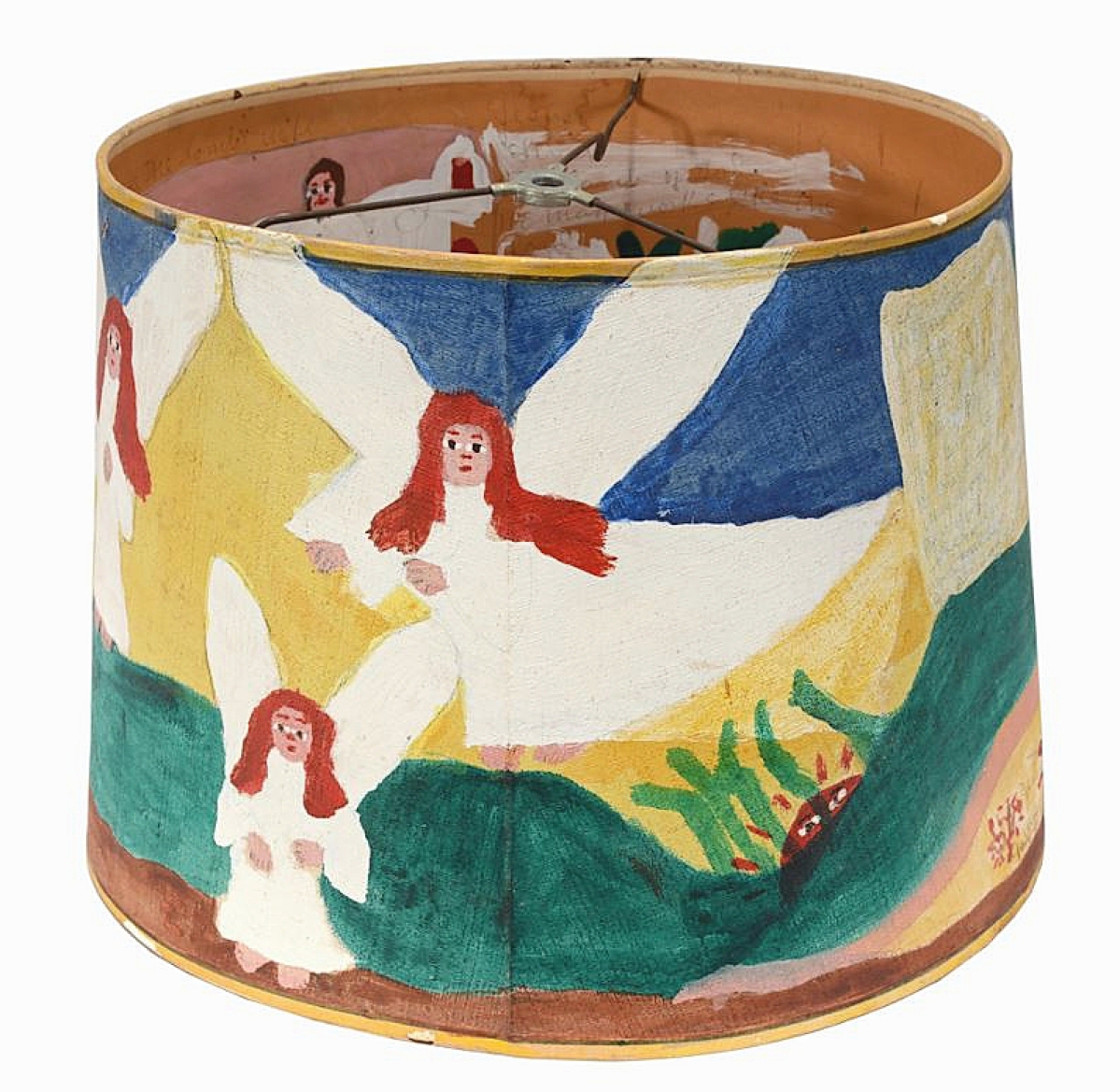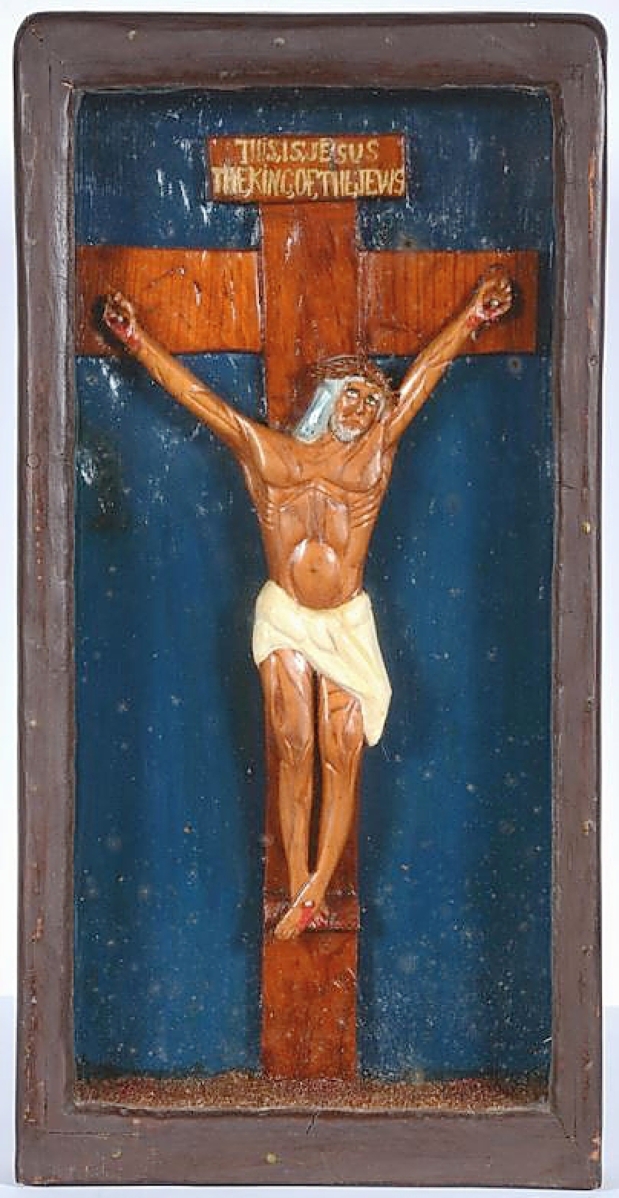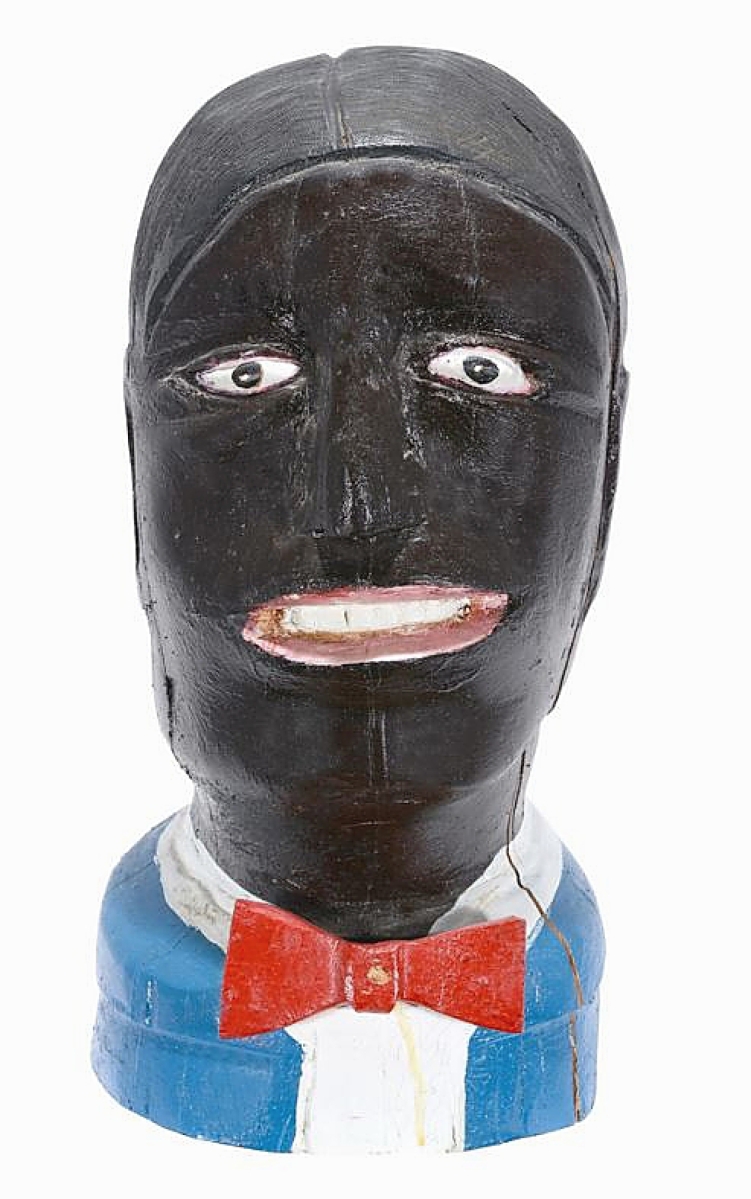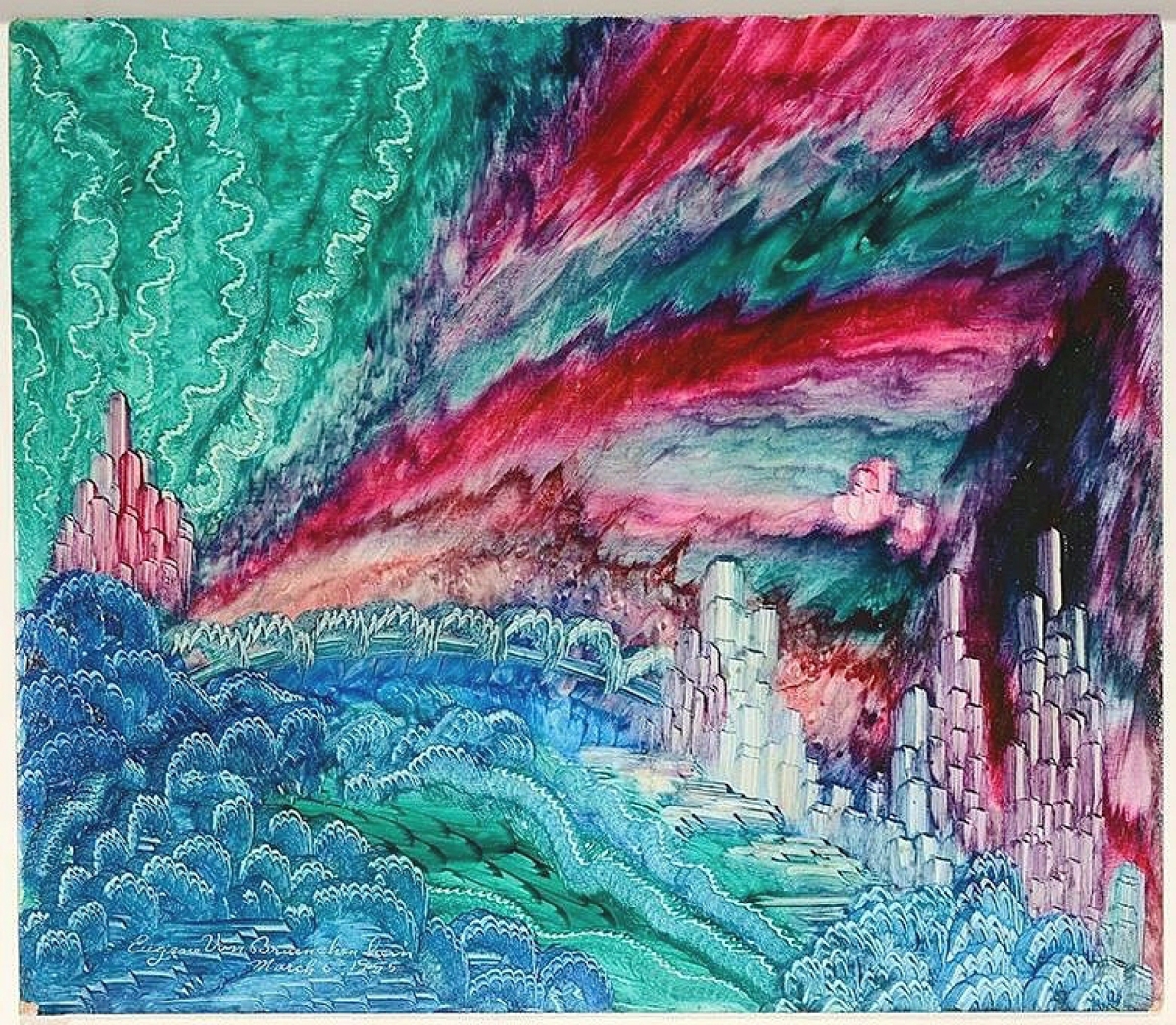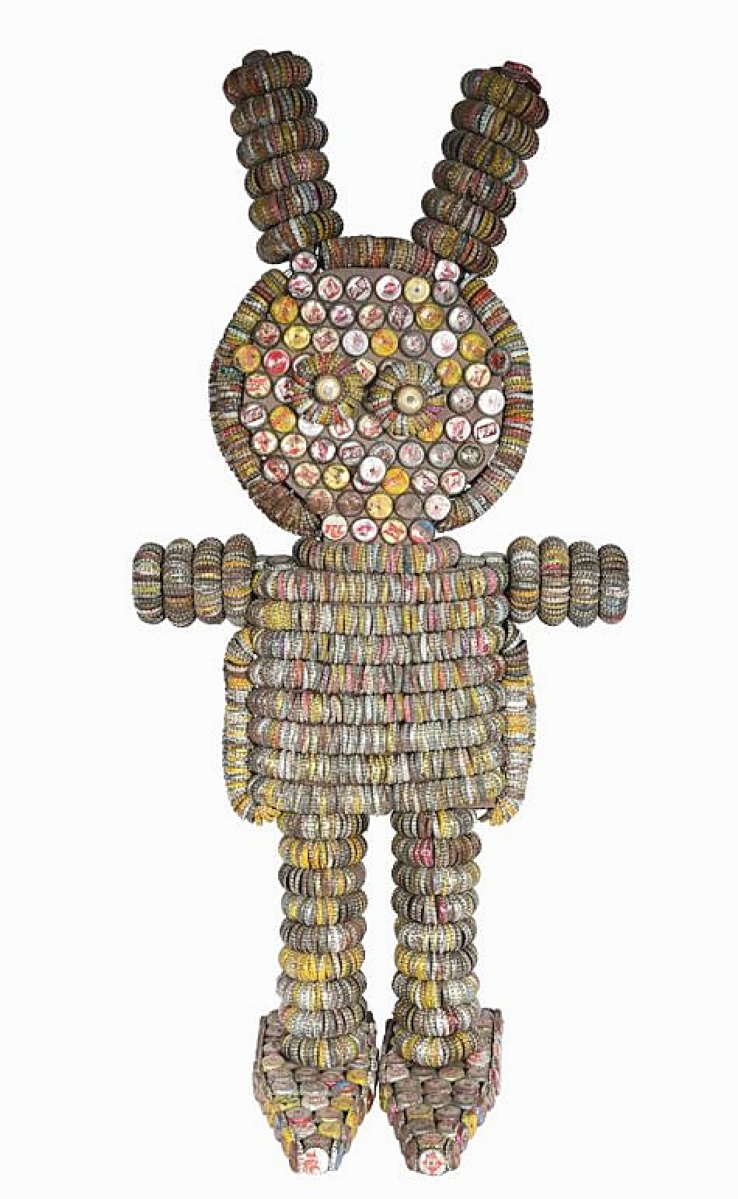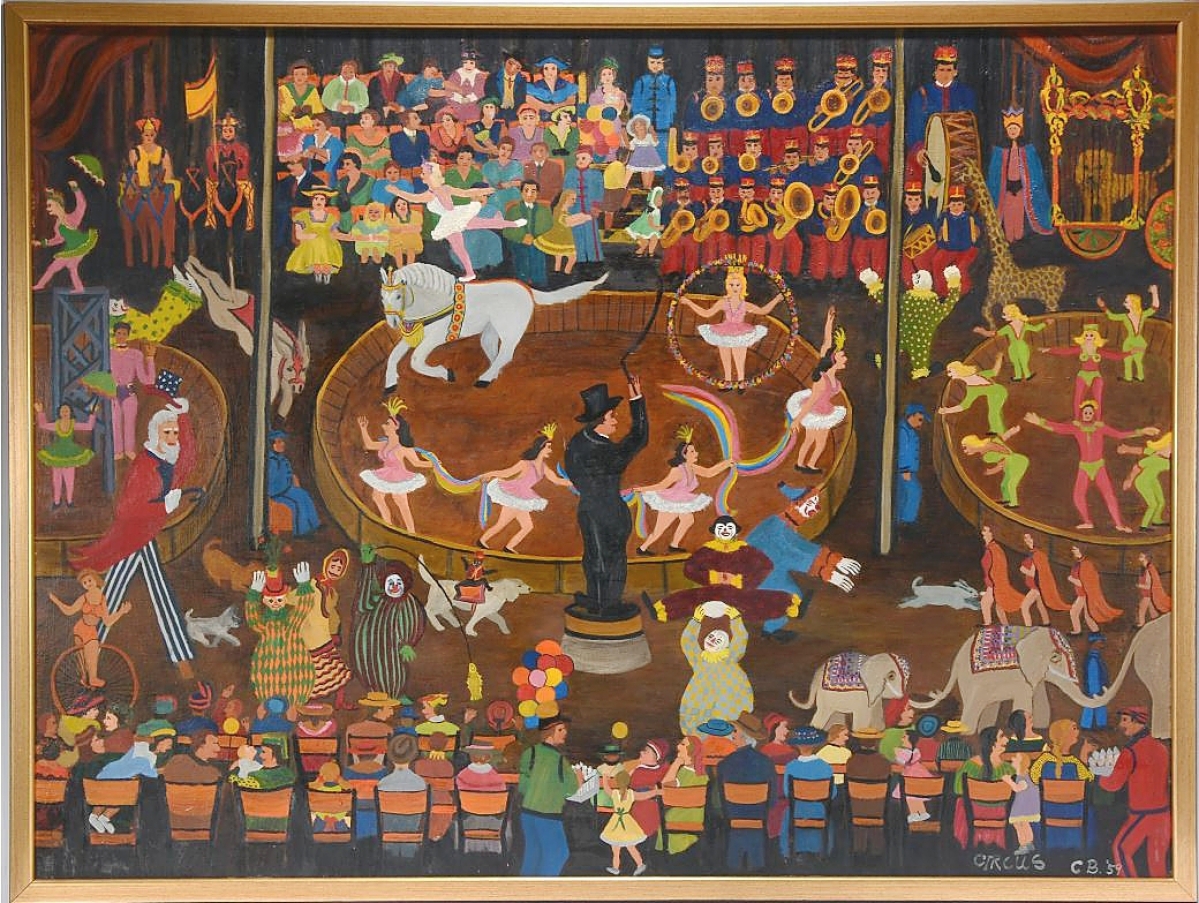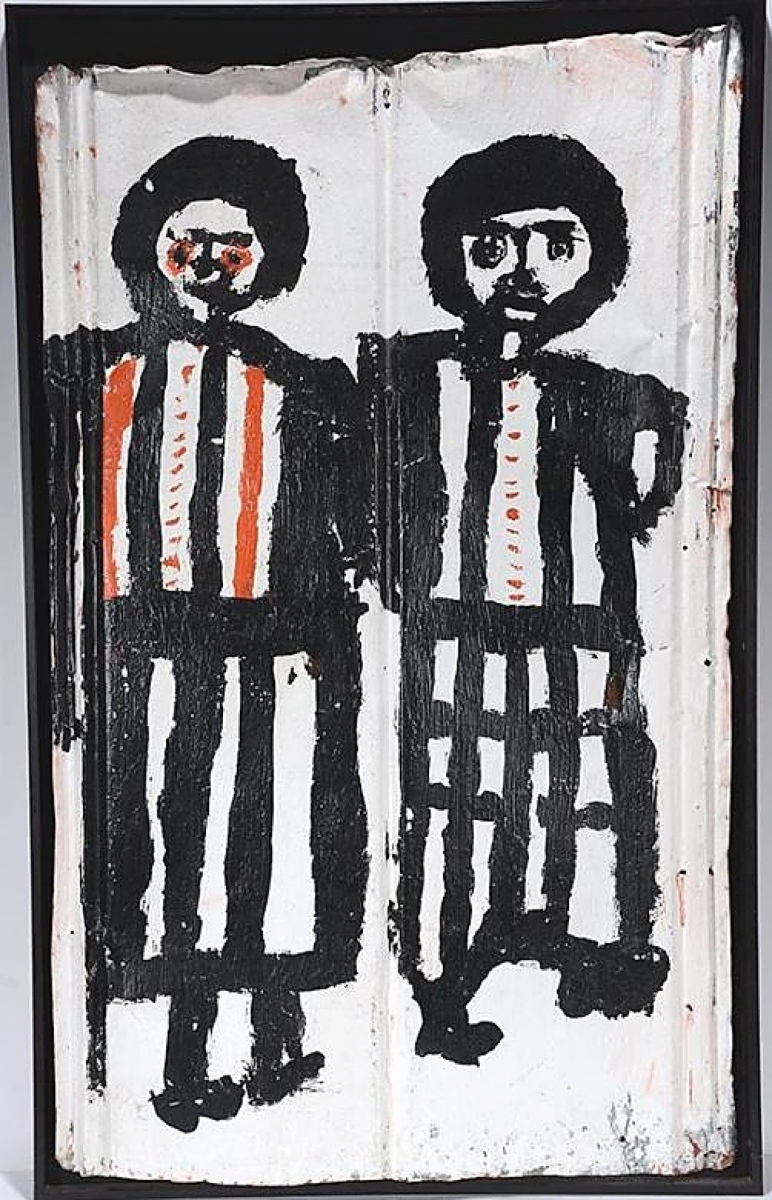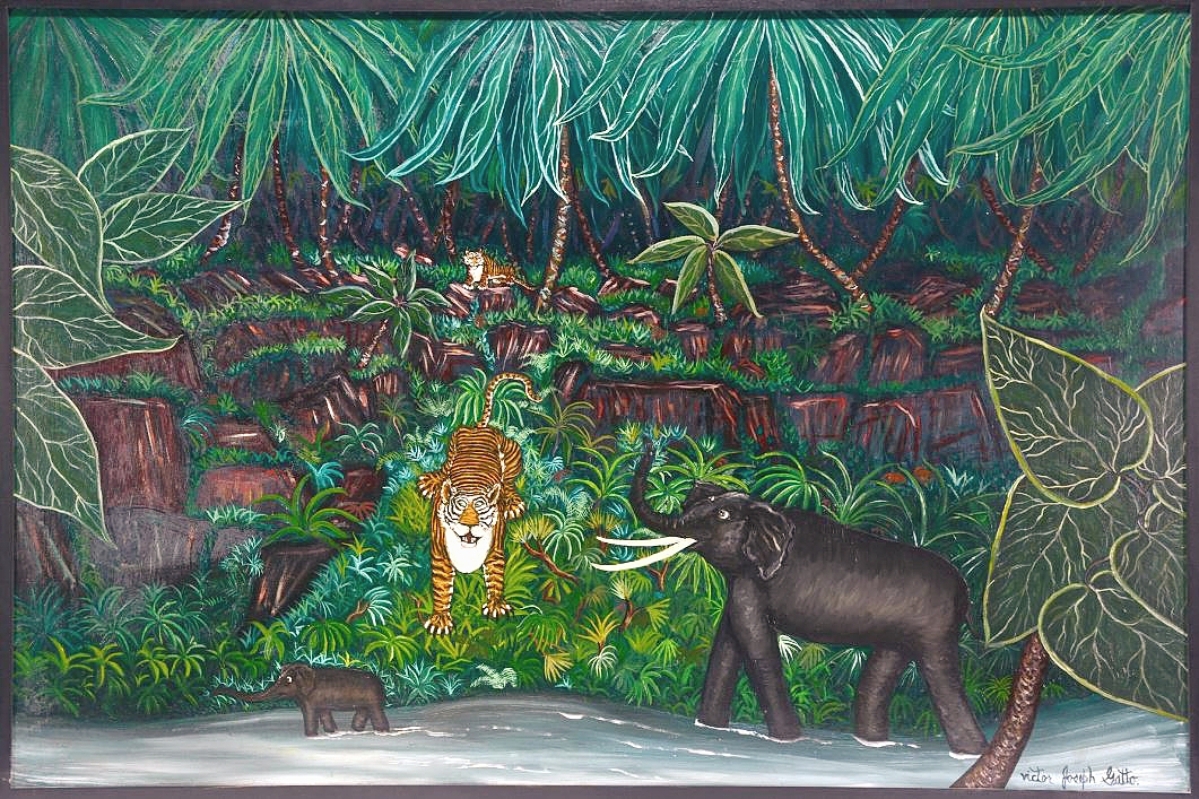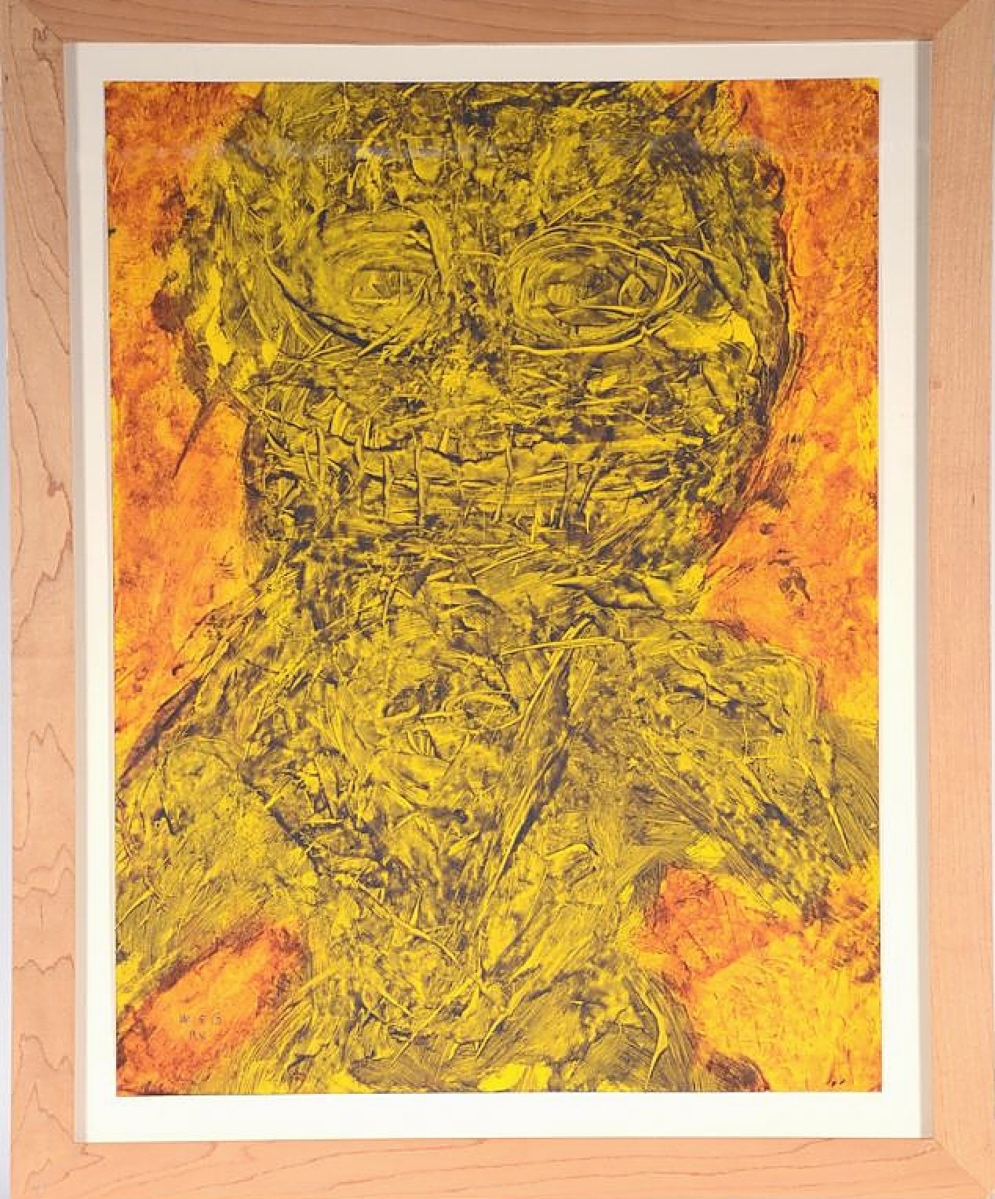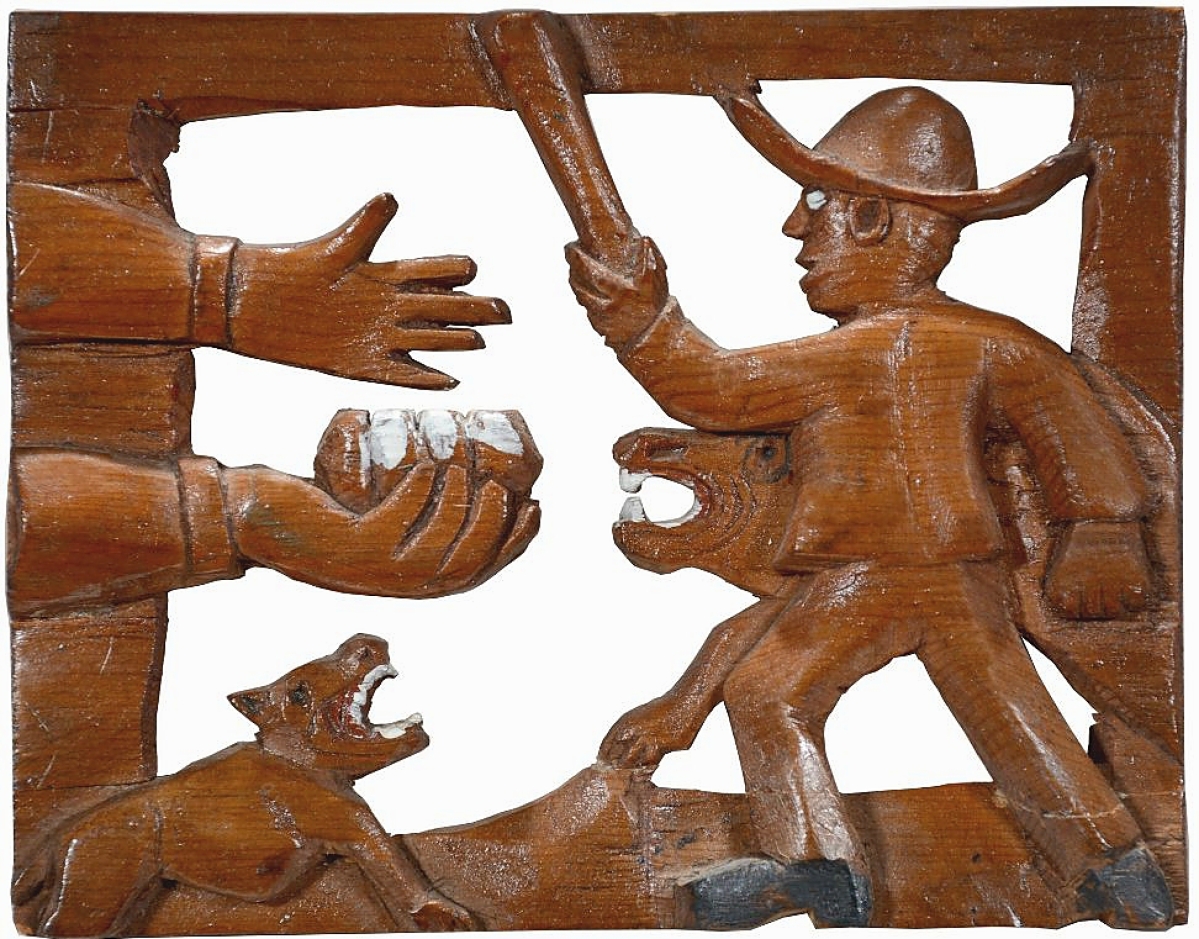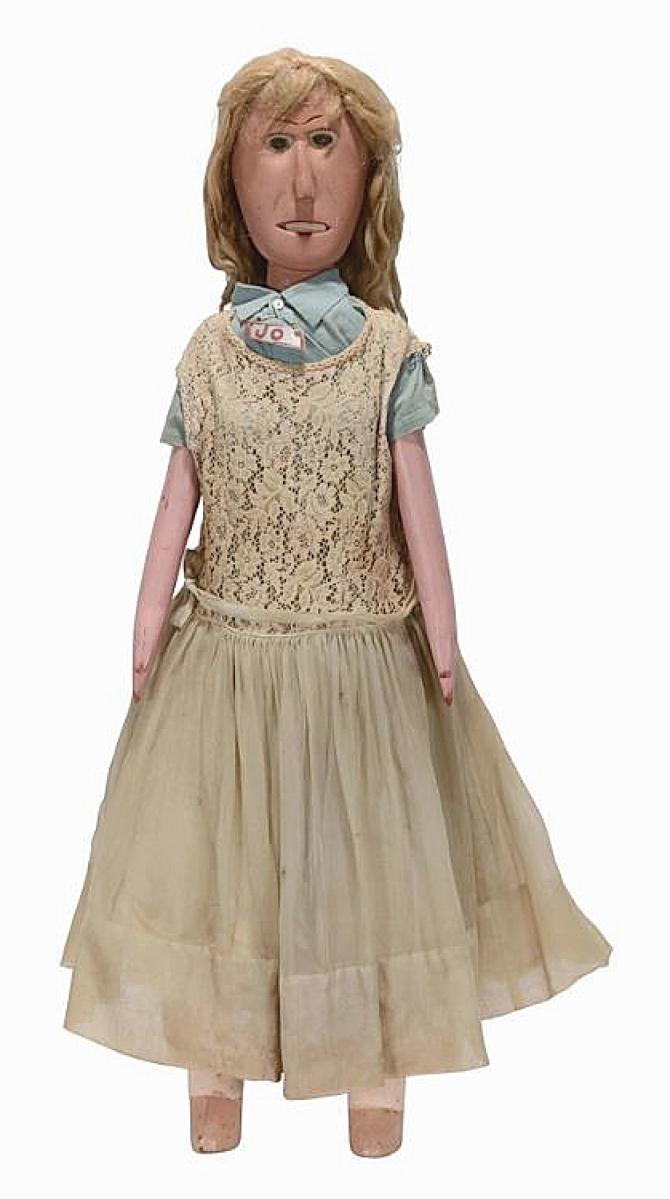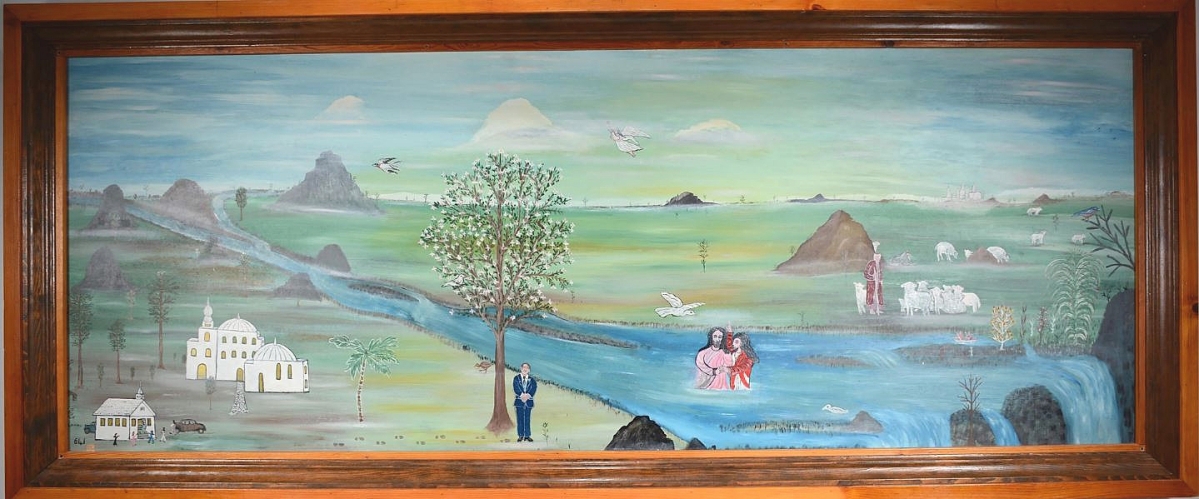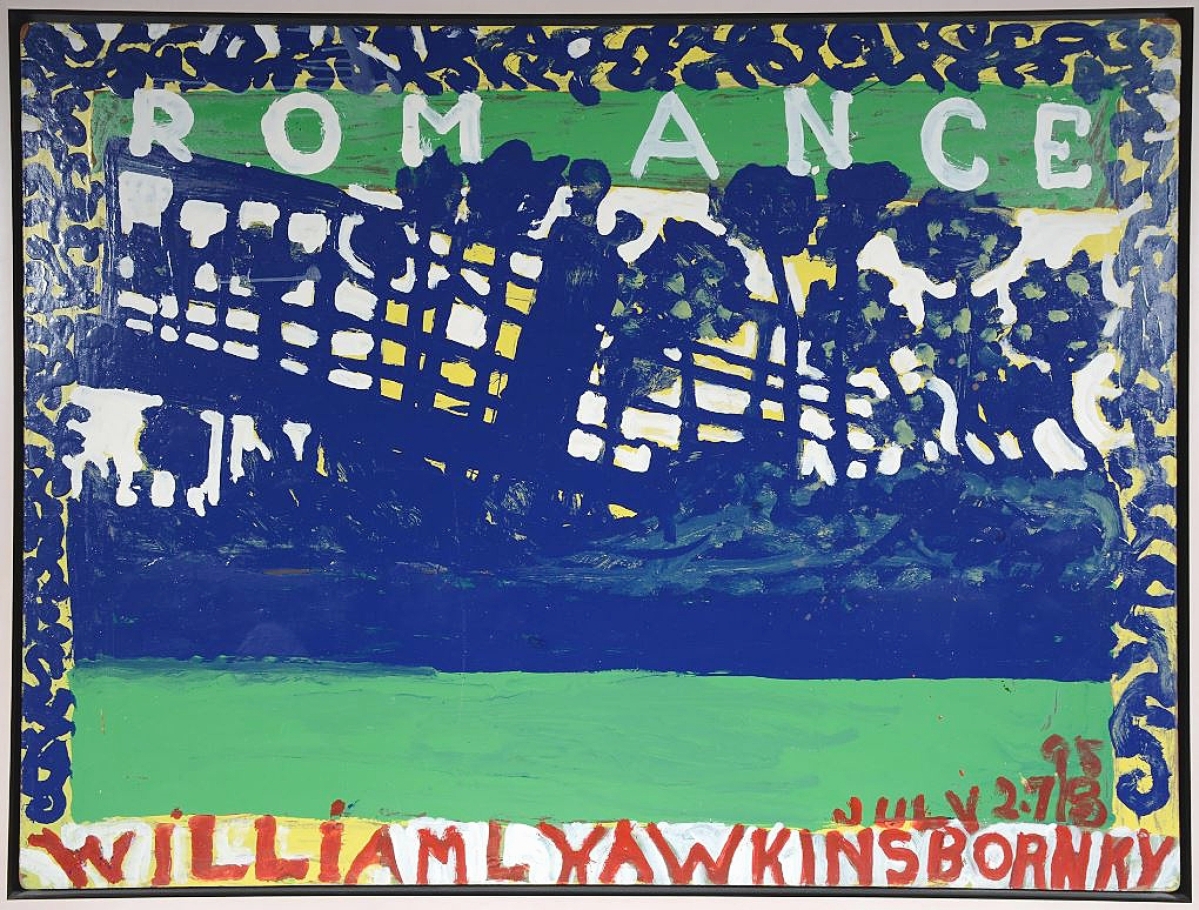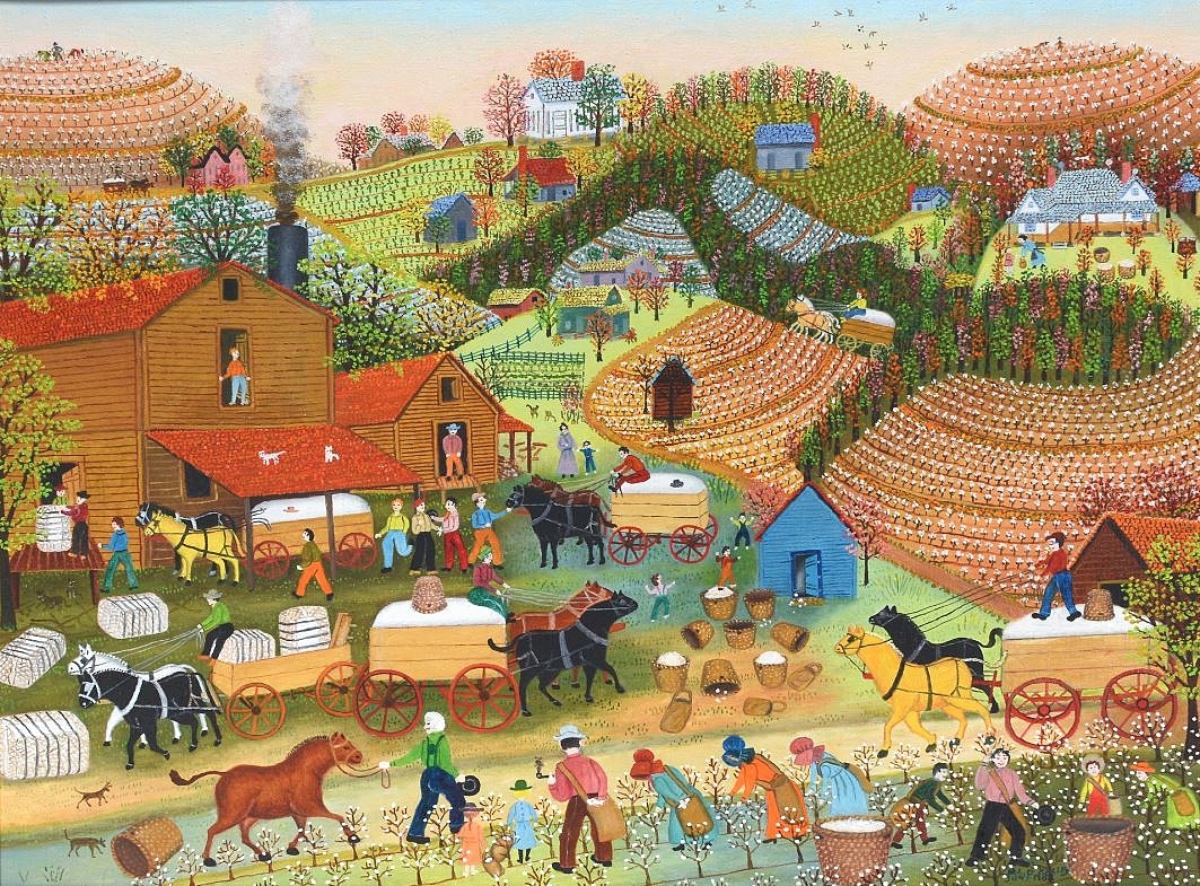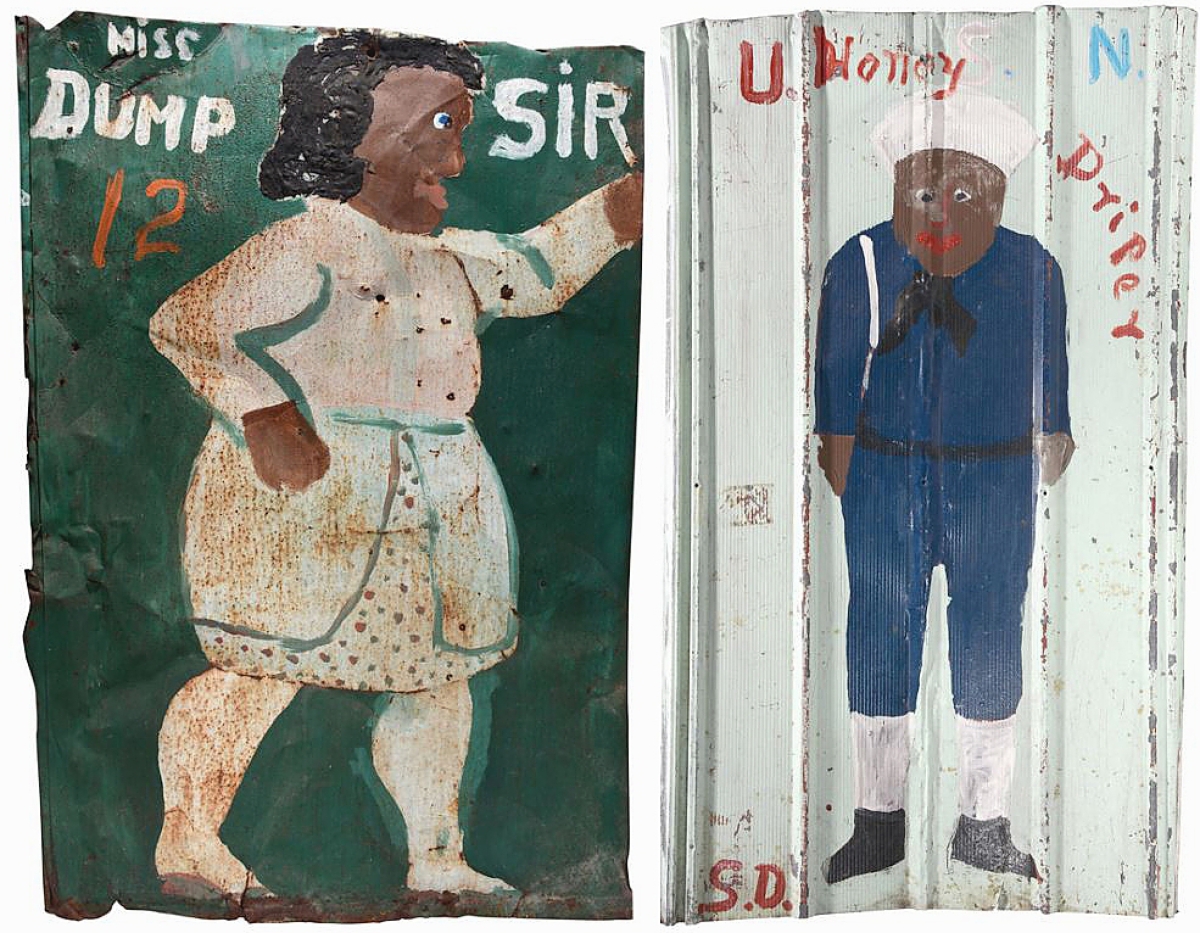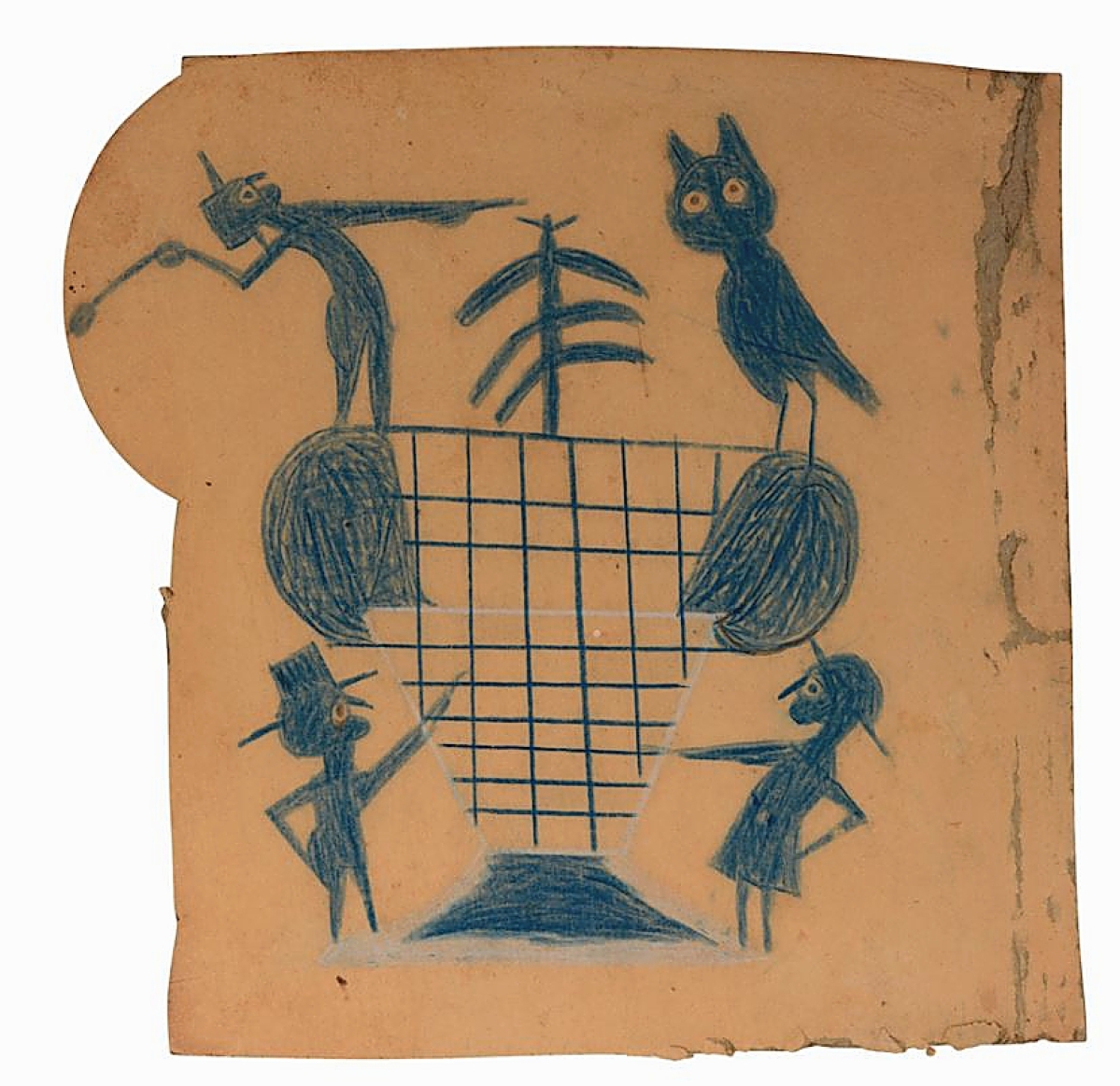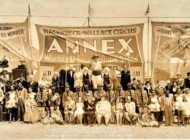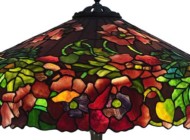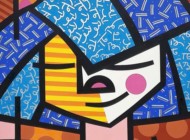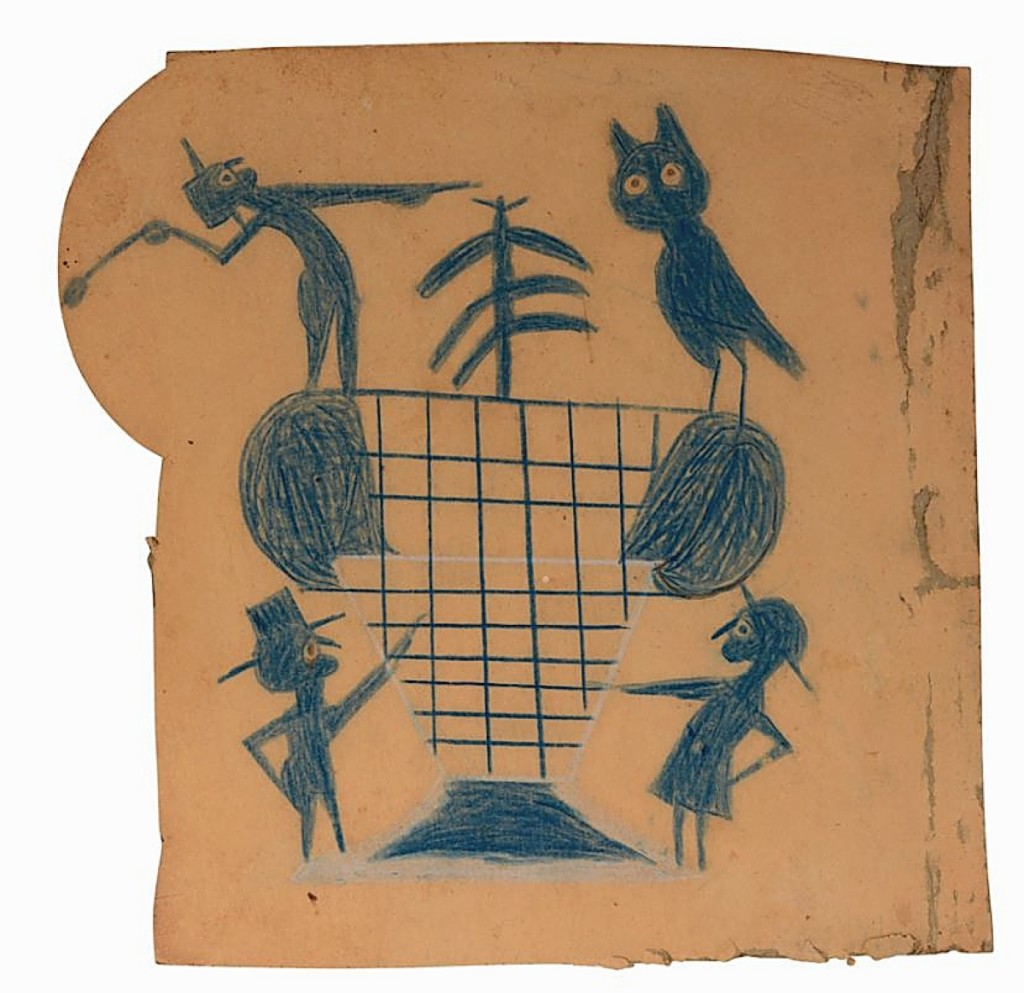
The sale was led by Bill Traylor’s “Four Figures And Basket In Blue,” a graphite, tempera and conte crayon work that brought $105,000. It had provenance to Ricco/Maresca Gallery and Carl Hammer Galleries and sold to a private collector. Slotin said it had all the bells and whistles a Traylor collector looks for.
Review by Greg Smith, Catalog Courtesy Slotin Folk Art Auctions
BUFORD, GA. – “This was by far one of our best sales in our 30 years of doing auctions,” said a glowing Steve Slotin on his firm’s November 14 Fall Masterpiece sale.
The sale at Slotin Folk Art Auctions comprised 403 lots of self-taught, outsider and folk art that spanned makers across the United States – and every lot sold for a total gross of approximately $1.5 million.
Originally scheduled for April, Slotin’s Masterpiece sale was postponed on account of unease. In the interim, Slotin said, “We did a few online sales to test the water and found things were really strong, so we felt confident we could still do a major sale without anyone in the audience.”
At the end of the 12-hour sale, Slotin noticed no significant drop among his bidders following along online until the last gavel came down.
“They followed it to the end,” he said. It was only himself, his wife and four or five employees manning the phone lines in the gallery on auction day.
The results, Slotin related, were tremendous. “Prices weren’t just strong. The prices were double and sometimes triple the estimates.”
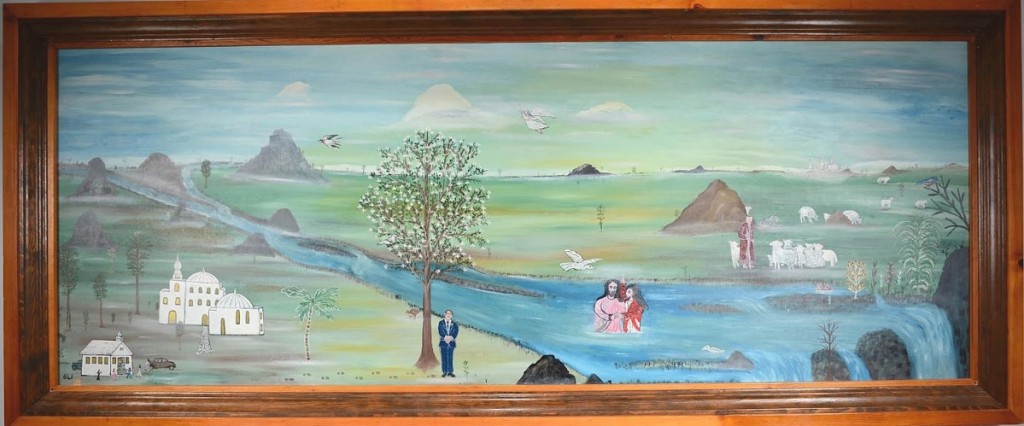
This monumental work, 103¼ by 44 inches, by visionary artist Howard Finster sold for $49,200, just beneath his artist auction record, also set by Slotin. It was unknown until recently, when a congregant from a church in northeast Georgia brought it forward to the Paradise Garden Foundation, the organization that manages and preserved Finster’s environment in Summerville, Ga. Finster created and gifted the work to the church in 1977, where he had served as the pastor from 1950 to 1965. It sat there behind the altar until the church renovated to make room for a baptismal.
The Masterpiece sale is Slotin’s finest auction of the calendar year, a cherry-picked release featuring fine examples from individual makers that hail from as many as 50 consignors.
Slotin has a reputable name in the field, coming up with the genre as it ascended in the fourth quarter of the Twentieth Century and furthermore into today. “When people bid with us, they’re getting a real Traylor, real Hawkins, real Clementine Hunter – they know that what they’re bidding on is correct,” Slotin said, unconsciously nodding to the fact that some high-value folk artists, Bill Traylor among them, have seen forgeries enter the market in recent years as values have risen.
Consequently, provenance has become a required byline in any major folk art work, extending to the sale’s top lot, a Bill Traylor (1853-1949) graphite, tempera and conte crayon on found cardboard of “Four Figures And Basket In Blue,” which had been handled by premier dealers Ricco/Maresca and Carl Hammer Galleries. Slotin said the drawing came from a collection in New Orleans and sold to an American private bidder for $105,000. A collector’s stamp on the back placed past ownership with Russ Herman.
“Having four figures is rare,” Slotin said, “The color was unique, too – that blue. And to have a geometric design inside with the figures around it – it had a lot of the bells and whistles you’re looking for.”
![A carved and dressed Possum Trot doll of Jo, by Calvin and Ruby Black (1902-1972 and 1915-1980), sold for $45,600. The doll was named after Josephine Nelson and was featured in the 1977 documentary Possum Trot: The Life and Work of Calvin Black that brought popularity to the artists. In the documentary, Nelson said, “After he got acquainted with me and I had proved myself a good friend, he decided to make a doll of me. He has one in [the Birdcage Theater] with my name on it.”](https://www.antiquesandthearts.com/wp-content/uploads/2020/11/slotin3-572x1024.jpg)
A carved and dressed Possum Trot doll of Jo, by Calvin and Ruby Black (1902-1972 and 1915-1980), sold for $45,600. The doll was named after Josephine Nelson and was featured in the 1977 documentary Possum Trot: The Life and Work of Calvin Black that brought popularity to the artists. In the documentary, Nelson said, “After he got acquainted with me and I had proved myself a good friend, he decided to make a doll of me. He has one in [the Birdcage Theater] with my name on it.”
A large enamel on Masonite work by Howard Finster, measuring 103½ by 44 inches and titled “Chelsea Baptist Church,” sold for $49,200. Finster created the work in 1977 – only a year after he received a vision from God to create 5,000 sacred works – for the church in northwest Georgia, where he had earlier preached from 1950 to 1965. It hung there behind the altar until the church recently renovated and needed the space for a baptismal, at which point a congregant contacted the Paradise Garden Foundation, which oversees the artist’s environment in Summerville, Ga.
“It was really hidden in plain sight,” Slotin said of the work, which was unknown and uncataloged before the congregant brought it forward. “It was there in the church, the doors were hardly ever locked, people did all their praying and singing in front of it, but never really noticed it.”
It sold to a private collector and is the second highest result for Finster at auction.
Two works from Sam Doyle sold well, including “Miss Dump Sir, #12,” $30,000; and “U.S.N. Honey Driper,” $24,000. Both were full-length portraits in Doyle’s signature style on found roofing tin. On the latter work, the auction house wrote, “The painting depicts a sailor from the Sea Islands who, according to the Doyle monograph published by Art Random, became a war hero when he shot down several Japanese planes at Pearl Harbor.”
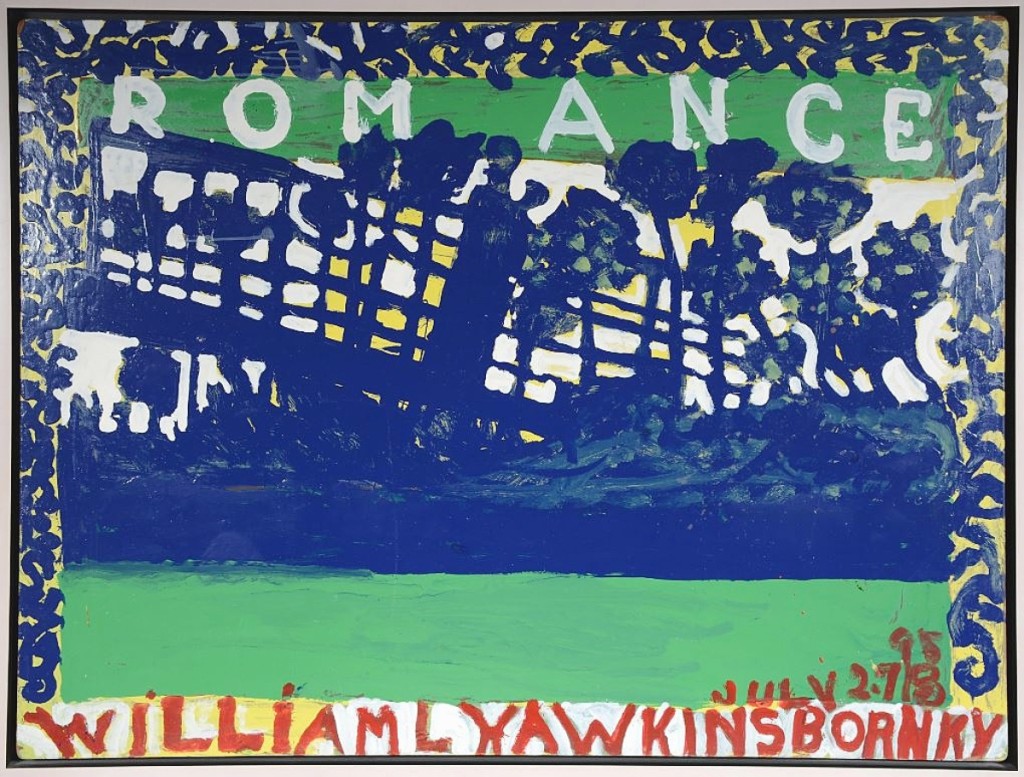
“This one was a nice bold piece, it was very easy on the eye,” Steve Slotin said on “Romance,” a 48-by-26-inch oil on Masonite by William Hawkins (1895-1990). It had provenance to Ricco/Maresca Gallery and sold for $34,800. Hawkins created a separate collage work with an advertisement to the top left corner that served as the inspiration for this painting.
“Like how CNN reports the news, Sam Doyle was an outlet to the black community in St Helena, S.C.,” Slotin said. “He was documenting the characters in that community: a black sailor, midwives, the first black laundry owner, first black store owner, undertaker, etc. Everyone had a nickname or an identity.”
The Corcoran Gallery of Art’s famed 1982 exhibition “Black Folk Art In America, 1930-1980” long credited with giving rise to unsung self-taught Black artists of the Twentieth Century, demonstrated its import yet again with the offering of Ulysses Davis’ “This Is Jesus The King Of Jews,” a 1936 carving of Christ’s crucifixion that was exhibited at that show.
“That Ulysses was already in the stratosphere before the auction even started,” Slotin said, nodding to the $25,200 result, over three times the high estimate.
Davis was not the only barber in the sale who carved the word of God into his works, he was joined by Elijah Pierce, the Columbus, Ohio, folk artist who is currently enjoying a major boon with a widely enjoyed exhibition at the Barnes Foundation. Pierce’s two works in the sale both went over estimate, “Don’t Bite The Hand That Feeds You,” a bas-relief carving, sold for $8,500; “Mother Cat With Kitten,” a carving depicting just that, brought $7,500.
It was the first time Slotin had ever handled a work by Noah Weiss with a late 1800s or early 1900s wall-mounted bull head carved in wood to life-size proportions. The premier carving was consigned from a Michigan collector and sold for $16,250. Weiss ran the Allen House Hotel in Northampton, Penn., and exhibited his carved and painted works in an adjoining building he constructed.
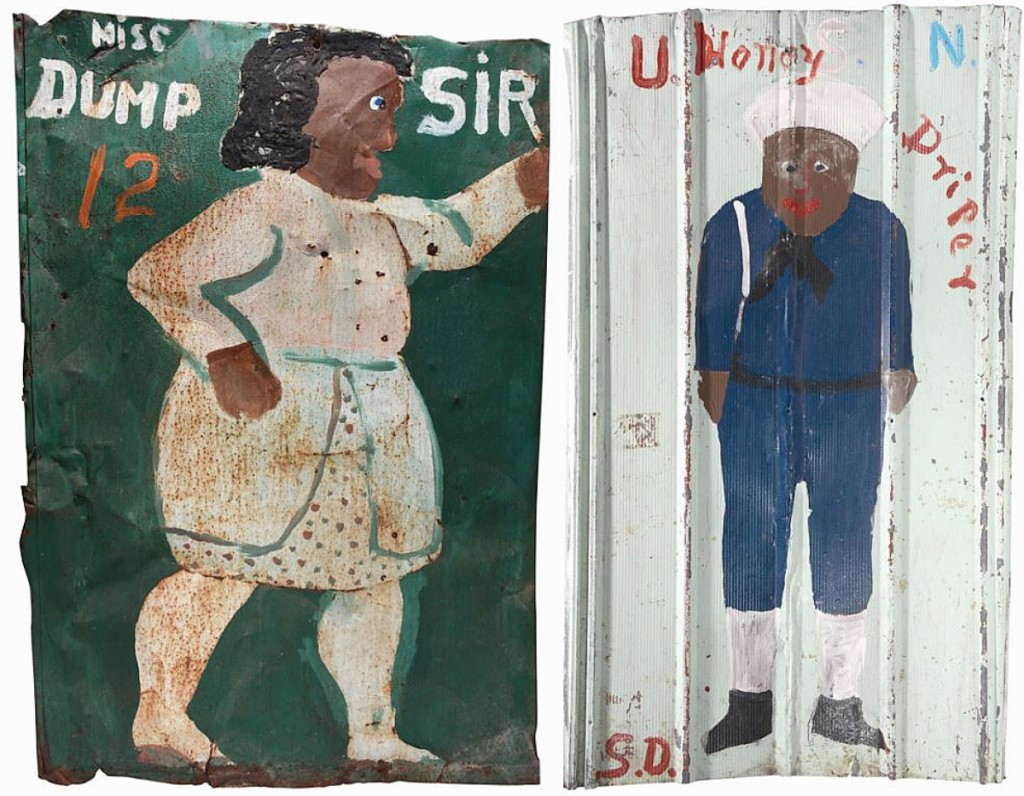
Two works from Sam Doyle (1906-1985) found the top of the sale, including “Miss Dump Sir, #12,” $30,000; and “U.S.N. Honey Driper,” $24,000. Both were painted on found tin roofing.
Discoveries and previously unlisted artists were desirable. On his first listing on the secondary market, Stoughton, Mass., psychic artist Frank H. Soper pulled in $4,625 for two works in one lot, one of them painted on and around a 1933 newspaper article in the Boston Sunday Post, which provides the only documentation known of the artist. The newspaper clipping features Soper at an easel painting the other work in the lot, a symmetrical floral design that depicts flowers and birds. The article notes that Soper drew and painted in a “trance-waking state” as a medium to a spirit known as The Old Master, who would guide the artist’s hand and draw of the Tatinkans, an ancient race that lived 30,000 years ago.
“There has to be more works from Soper,” Slotin said. “This is what I’m looking for.”
Also new to the market were six paintings by George Woodward, an unknown artist whose works were found in the Midwest. His paintings sold anywhere from $440 to $660 with subjects that seemed to center largely around Heaven and Hell.
“Large Potted Flowers,” a 48-by-14-inch paint and heavy mud on board by Jimmie Lee Sudduth, took the second highest record for the Alabama artist at auction with $10,000. Slotin provided a dated 2002 picture of the artist standing next to the work. It came from a Mississippi collector who purchased it directly from the artist, along with the following lot, a Sudduth work featuring high-rise buildings in New York that took $3,120.
A number of pieces in the sale came by descent through the family of Robert Cargo, an early Alabama folk art dealer in the 1980s.
“He was a very well-respected dealer, he had the best of the best. I always wanted to sell his collection,” Slotin said.
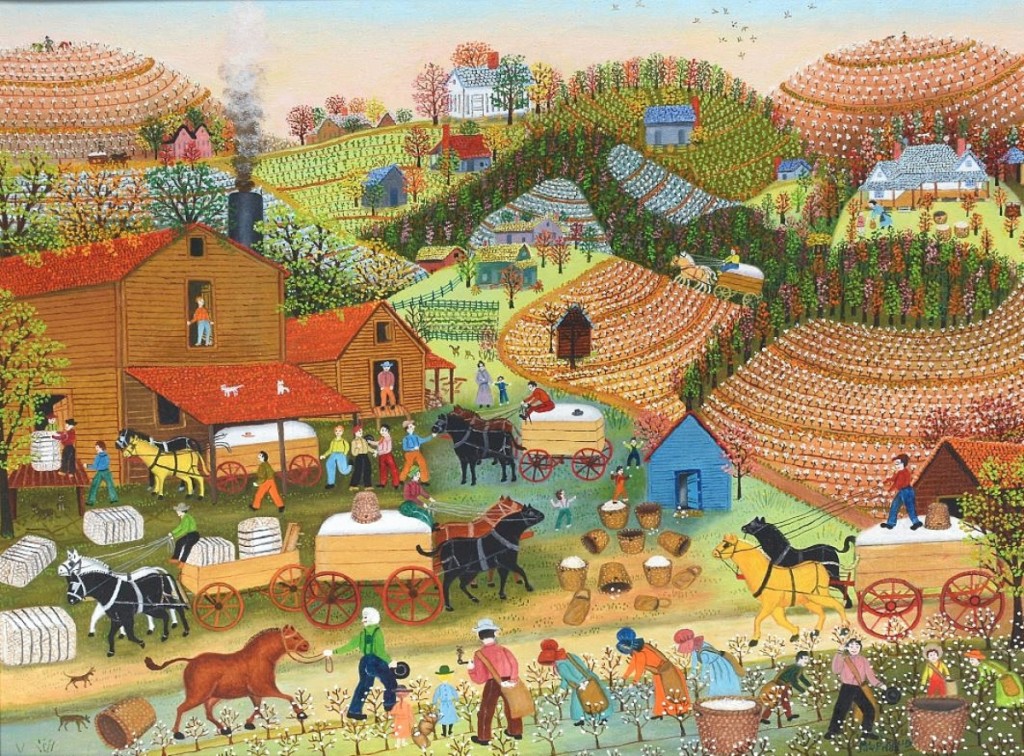
The Georgia memory painter Mattie Lou O’Kelley (1908-1997) was represented by this oil on canvas painting, “The Cotton Ginning In Georgia,” which sold for $23,400. Dated 1982, 32 by 24 inches.
Among them were a few works by B.F. Perkins (1904-1993), a Marine veteran who retired to Alabama and established a church in Bankston. A 20-by-28-inch oil on canvas, circa 1987, depicting the blood lineage from Adam to Christ over 62 generations, sold for $3,840.
On why folk art seems to be doing well right now, Slotin said, “It’s young, hip, colorful, fun. It’s not like the contemporary art of the ’70s – a white painting on a white wall. This is art from the people, for the people. It was never meant to be highfalutin, these artists never really considered themselves artists. They were driven to create. I think the rest of America is waking up to this truly American art form and what it’s all about.”
For additional information, www.slotinfolkart.com or 770-532-1115.
